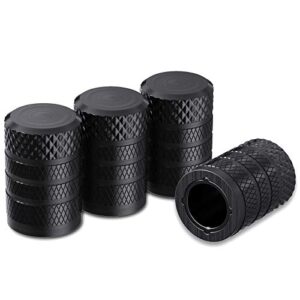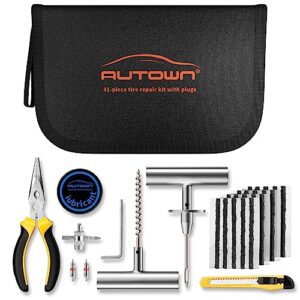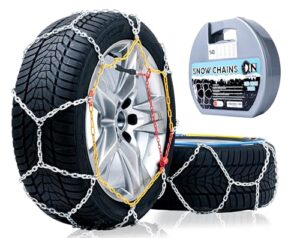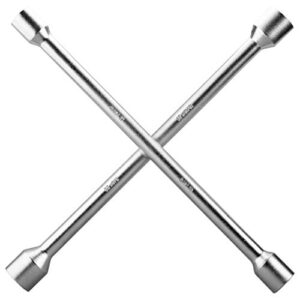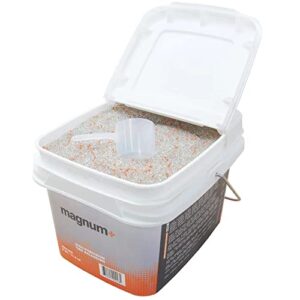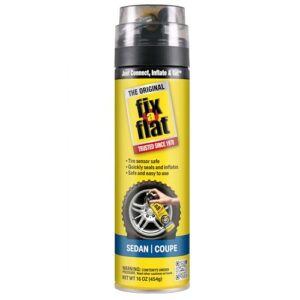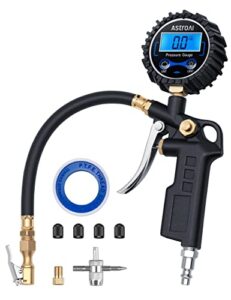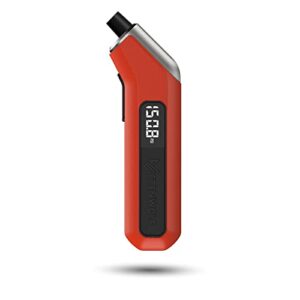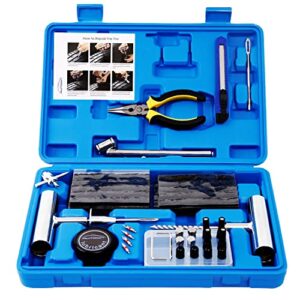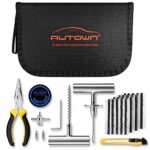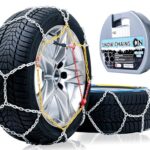If you hit a tire on the highway, safely pull over and assess your vehicle for damage. Contact roadside assistance or the authorities if necessary.
Striking debris on the highway, such as a stray tire, can be an alarming experience, potentially posing danger to you and your vehicle. Immediate attention to safety and damage assessment is critical after such incidents. Upon encountering a tire on the road, drivers should maintain composure, ensuring to minimize the risk of further accidents or injuries.
Engaging hazard lights and navigating towards a safe location should be your top priority before exiting the vehicle to inspect for harm. This concise guide offers drivers straightforward advice on the steps to follow after colliding with a tire on the highway, focusing on safety, damage control, and when to involve professional services. Remember, a calm and prompt response is the key to effectively managing roadside emergencies.

The Risks Of Highway Debris
Traveling on the highway is risky. Debris, like tires, can be dangerous. Unexpected objects pose a threat to drivers. Quick reactions are often needed. Accidents can happen. It’s important to understand the risks. Being prepared can save lives.
Good observation is key. Always scan the road ahead. Look for odd shapes or objects. Changes in traffic patterns may signal hazards. Do not swerve suddenly. Reduce speed carefully. Stay calm. Signal other drivers if possible. Safety is a shared responsibility.
Every year, tire-related accidents occur. Many could be prevented. Awareness is crucial. Here are some recent statistics:
| Year | Tire-Related Crashes | Injuries | Fatalities |
|---|---|---|---|
| 2021 | 75,000 | 11,000 | 200 |
| 2022 | 80,000 | 12,000 | 250 |
Data reveals an upward trend. Personal safety measures are vital. Tire maintenance is a must.
Initial Steps After A Tire Impact
Driving can be unpredictable. Hitting a tire on the highway can be a frightening experience. Knowing what to do immediately after can make all the difference. The initial steps after a tire impact are crucial for safety and damage control. Follow these guidelines to ensure you handle the situation effectively.
Assessing Personal Safety
Your first priority is to check for any injuries. Take a deep breath and stay calm. Ensure everyone in the vehicle is unharmed. If anyone is injured, call 911 immediately.
- Do a quick self-assessment to ensure you are okay.
- Ask passengers if they feel any pain or discomfort.
- If injuries are present, avoid moving unless necessary for danger.
Pulling Over Safely
Once everyone is accounted for, focus on getting the vehicle to a safe spot. Use your turn signal and carefully steer the vehicle toward the nearest breakdown lane or shoulder, away from traffic.
- Activate your hazard lights to alert other drivers.
- Keep a steady pace and avoid sudden maneuvers.
- If possible, aim for a well-lit area or near a highway call box.
Evaluating Vehicle Damage
After an impact with a tire on the highway, assessing your vehicle’s integrity is crucial. Identify any potential damages. Immediate attention to these signs ensures safety and avoids costly repairs.
Spotting The Signs Of Trouble
Visual inspection is your first step post-incident. Look for these key indicators:
- Tire damage: Check for cuts, bulges, and flats.
- Wheel problems: Bent rims can steer you wrong.
- Undercarriage issues: Scrapes or leaks spell trouble.
- Alignment: Does the car pull to one side? It’s a red flag.
Next, listen to your car. Any new noises like thumping, grinding, or whining warrant attention. Finally, feel how your car drives. Vibrations or handling issues? Act fast.
When To Call For Professional Help
Some damages need a closer look by an expert. Consider professional help if you notice:
| Issue | Action |
|---|---|
| Persistent vibrations: | Seek alignment or tire service. |
| Fluid leaks: | A mechanic should inspect ASAP. |
| Warning lights: | Diagnostic tests can uncover hidden problems. |
| Unusual noises: | Silence is golden. Racket is not. |
Remember, safety first. In doubt? Don’t hesitate. Call for help and keep your ride smooth and safe.
Safety Measures To Avoid Further Incidents
Safety measures play a crucial role after hitting a tire on the highway. Acting quickly and wisely ensures everyone’s safety and prevents further issues. Take these steps:
Staying Visible To Other Drivers
Making sure other drivers can see you is vital. Turn on your hazard lights as soon as you can. This alerts others to your situation. If it’s dark, use interior lights to boost visibility.
- Hazard lights: Turn these on immediately.
- Interior lights: Use these at night to be more visible.
Setting Up Early Warning Devices
Early warning devices notify other drivers of trouble ahead. Place reflective triangles behind your vehicle to guide traffic away.
- First triangle: Place it 10 feet from your car.
- Second triangle: 100 feet behind your vehicle in the center of the lane.
- Third triangle: 200 feet behind, ensuring visibility to oncoming traffic.
Dealing With Insurance
Dealing with Insurance after hitting a tire on the highway can seem daunting, but taking the right steps ensures you’re covered. Your focus should be on documenting the incident and navigating the claims process efficiently. Let’s guide you through each stage so you handle the situation like a pro.
Documenting The Incident
Clear documentation is vital for insurance purposes.
- Stay safe – move to a secure location.
- Call authorities – report the accident.
- Take photos of the tire, damage, and surroundings.
- Look for witnesses who can corroborate the event.
- Collect contact information from any other affected parties.
Gather all evidence promptly to support your claim.
Navigating The Claims Process
Understanding your policy helps streamline the claims submission.
- Contact your insurer as soon as possible.
- Provide all documentation from the incident.
- Review your coverage with your agent.
- Follow their guidance for submitting a claim.
- Keep records of all correspondence and decisions.
An organized approach ensures quick and fair resolution.

Preventative Practices For Drivers
Navigating the highway demands attention and readiness. One can never predict when a tire or debris might appear in the path. Smart drivers stay ahead with proactive measures. These steps limit the chances of untimely and dangerous incidents on the road.
Regular Vehicle Maintenance
Keeping your car in peak condition is essential.
- Regularly check tire pressure and tread depth.
- Inspect brakes, lights, and fluid levels every month.
- Schedule professional check-ups twice a year.
Maintained vehicles react better in sudden situations. They help drivers avoid obstacles safely.
Staying Prepared For Road Emergencies
Equip your car with vital tools.
- Emergency kit: Include flares, warning triangles, and a flashlight.
- Spare tire: Always have a well-maintained spare and jack.
- Instruction manual: Keep on hand for quick reference.
Prepare for unexpected highway scenarios. Pack extra water and blankets for long trips.

Frequently Asked Questions
What Happens If You Hit Something On The Freeway?
Stop your car safely, switch on hazard lights, and call 911. Share insurance information with any involved parties and take pictures for evidence. Await law enforcement to file a report. If necessary, seek medical attention and contact a lawyer for legal advice.
Will My Insurance Go Up If I Hit An Object?
Hitting an object with your car may result in higher insurance premiums, depending on your policy’s details and claim history. Always check with your insurance provider for specifics.
What Happens If I Run Over A Tire?
Running over a tire can damage your vehicle’s undercarriage, wheels, and alignment. You may experience immediate or delayed issues, so it’s recommended to get a professional inspection promptly.
Is Hitting An Object Collision Or Comprehensive?
Hitting an object with your vehicle is generally covered under collision insurance, not comprehensive. Collision insurance applies to damages from such impacts.
Conclusion
Navigating the sudden challenge of a tire on the highway demands quick thinking and safe actions. Remember to maintain calm, steer clear of the roadblock, and signal your intentions to fellow drivers. After pulling over to assess damages, seek professional help if necessary.
Drive attentively and stay prepared to ensure your on-road safety.





